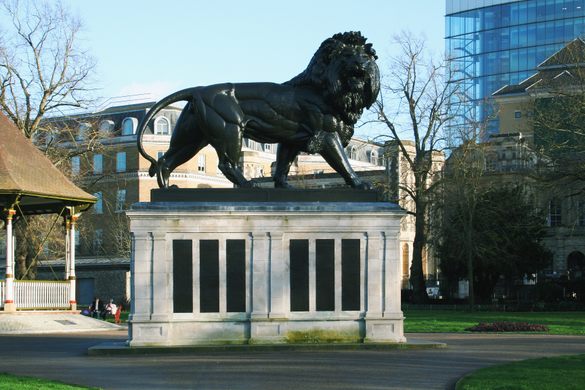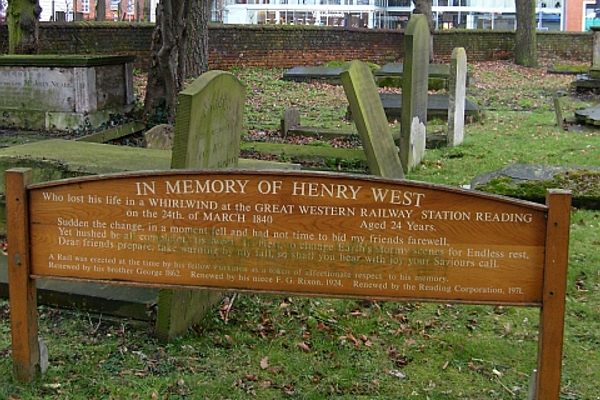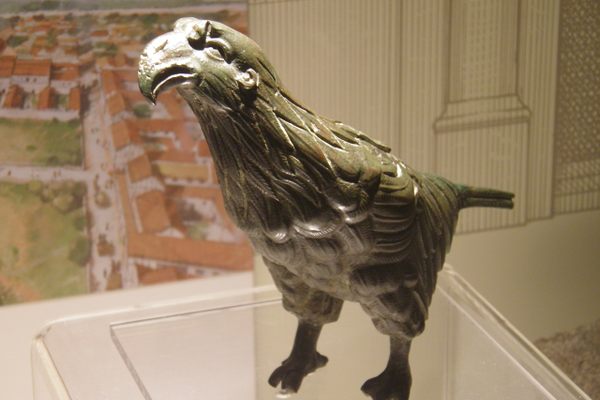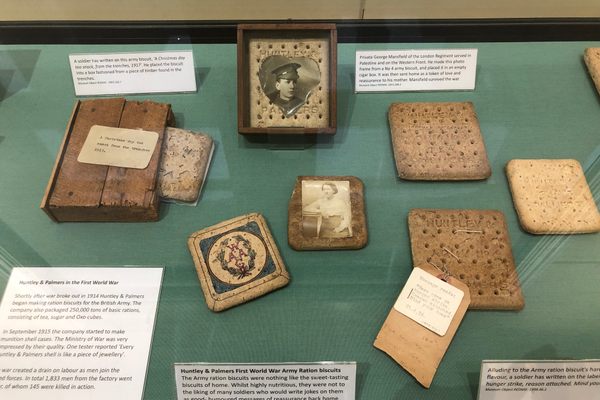Maiwand Lion
The lion represents a fascinating part of English history, and the story of a man who obsessed over its creation.
In the heart of Forbury Gardens stands a majestic sculpture of a lion. It’s one of the world’s largest cast iron statues of a lion, weighing in at a tremendous 16 tons. Built to commemorate soldiers who died in the Battle of Maiwand, the lion represents a fascinating part of English history and the story of a man who obsessed over its creation.
The Maiwand lion was sculpted by George Blackall Simonds, who was a member of the Reading H&G Simonds brewing family. The design and completion of the lion took two years of meticulous work. To ensure the lion was anatomically correct, Simonds carefully observed the lions in the London Zoo, and became obsessed with the details of these elegant but ferocious creatures. Sadly, there were rumors that Simonds died by suicide after learning that the lion’s gait was incorrectly made of a domestic cat. He was also the mastermind behind the statue of Queen Victoria (1887) and George Palmer (1891).
The sculpture’s pedestal was cast by H. Young and Co. of Plimico in 1886, and a terra-cotta pedestal supported it. However, the terra-cotta showed signs of cracking under the lion’s weight and was replaced with Portland stone. At the front of the pedestal is a rectangular plinth that carries the names of those who died in the Battle of Maiwand.
The Battle of Maiwand took place in July 1880 and was one of the main battles of the Second Anglo-Afghan War. Afghan forces defeated a small British force consisting of British and Indian troops led by Brigadier-General George Burrows. Many lives were lost on both sides, an estimated 2,000 to 2,750 Afghan troops and 1,200 British troops.
The statue has become a beloved symbol to the residents of Reading. It appears on the Reading Football Club crest, and the local Loddon Brewery features the lion in one of the IPAs called Forbury Lion.
Know Before You Go
From the Reading train station, it is a four-minute walk to the monument.

















Follow us on Twitter to get the latest on the world's hidden wonders.
Like us on Facebook to get the latest on the world's hidden wonders.
Follow us on Twitter Like us on Facebook